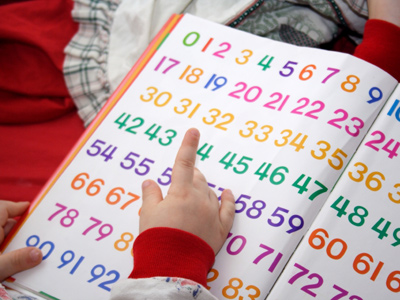
Ask the AI Tutor
Need help with Year 2 Numbers - Number Lines? Ask our AI Tutor!
AI Tutor - Lucy
Connecting with Tutor...
Please wait while we establish connection

Number lines are a useful tool when doing additions or subtractions.
Year 2 Numbers - Number Lines
Use number lines to compare and find numbers. Jump in steps, read positions, and decide which is bigger by looking to the right.
Question 1
44 and 51
45 and 49
51 and 58
44 and 49
Looking at the numbers on either side might be helpful
Question 2
They are all even
They are all odd
They are all over 10
They all end in 5
The missing numbers are 1, 3, 5, 7 and 9, which are all odd numbers
Question 3
26 and 31
25 and 29
29 and 40
23 and 27
25 comes before 26, and 29 comes between 28 and 30
Question 4
75, 76 and 77
72, 74 and 77
74, 75 and 79
80, 90 and 100
Counting up aloud will help identify the missing numbers
Question 5
88, 89, 90
2, 3, 4
66, 67, 68
20, 21, 22
Counting up from 17 and 18 would include 20, 21 and 22
Question 6
The numbers are getting smaller
The numbers are all even
The numbers are going up in 5s
The numbers are all odd
Each number is 5 more than the one before it
Question 7
5
8
9
2
4 comes before 5, 6 comes after
Question 8
39, 44, 47
8, 9, 10
77, 87, 90
20, 23, 27
Counting backwards and forwards from 43 includes the numbers 39, 44 and 47
Question 9
25
30
39
28
30 comes before 31, and after 29
Question 10
60
67
63
70
The numbers are going down, not up
**Unlimited Quizzes Await You! 🚀**
Hey there, quiz champ! 🌟 You've already tackled today's free questions.
Ready for more?
Ready for more?
🔓 Unlock UNLIMITED Quizzes and challenge yourself every day. But that's
not all...
not all...
🔥 As a Subscriber you can join our thrilling "Daily Streak" against other
quizzers. Try to win a coveted spot on our Hall of Fame Page.
quizzers. Try to win a coveted spot on our Hall of Fame Page.
Don't miss out! Join us now and keep the fun rolling. 🎉
**Unlimited Quizzes Await You! 🚀**
Hey there, quiz champ! 🌟 You've already tackled today's free questions. Ready for more?
🔓 Unlock UNLIMITED Quizzes and challenge yourself every day. But that's not all...
🔥 As a Subscriber you can join our thrilling "Daily Streak" against other quizzers. Try to win a coveted spot on our Hall of Fame Page.
Don't miss out! Join us now and keep the fun rolling. 🎉






